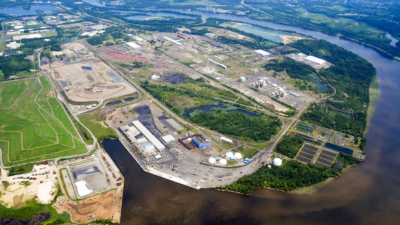The e-commerce revolution has had substantial impacts across a broad range of industries, including commercial real estate. In addition to creating a boom in demand for industrial facilities, e-commerce has placed significant demands on the labor market. As labor becomes more difficult to secure, automation and other technologies are increasingly viable options.
KEY TAKEAWAYS
- E-commerce has shifted the dynamics of consumer demand and occupier supply chains perhaps more than any other force in the last century. The shift from distributing bulk products to retailers to a model of distributing individual products directly to consumers has prompted tremendous change in warehouse operations and requirements.
- E-commerce operations tend to have higher employee counts (two to three times more than traditional warehousing) and greater automation compared with more traditional distribution centers. Because of this, modern warehouses require more parking, cross-docks, higher clear heights and greater power loads than traditional warehouses. The need for these modern amenities has helped stimulate the record industrial development throughout the U.S. and will require more redevelopment of older product in in-fill locations, as relatively few older industrial buildings are appropriate for supporting e-commerce.
- With online shopping rising sharply and labor constraints widening, more companies are utilizing automation hand in hand with their employees as a way to reduce the human work burden and increase worker productivity, thereby lowering the total labor need. Automation helps optimize operations by performing redundant tasks that would typically be performed by human employees.
- No company has had a greater effect on shopping patterns, the need for industrial labor and the usage of automation than Amazon. The e-commerce behemoth operates more than 300 fulfillment centers in the United States alone, with another 36 in the pipeline. In turn, Amazon has driven change in occupier supply chain logistics and the industrial buildings that house them.
- With the greater use of automation due to its increased importance in supply chain strategies, future industrial real estate demand will be closely linked to the availability of qualified labor. Metros like Detroit with specialized engineering workers, and markets in Georgia including Atlanta and Savannah with a plethora of industrial automation training opportunities continuing to thrive.
- The increasing use of technology in warehouses is fueling the need for greater and more reliable power. Solar power and individual building generators are becoming more common in distribution centers. The Greater Phoenix region plans to provide more solar power for distribution, which will be an advantage for the market going forward.
- While the distribution industry is in a state of constant change, whether it be demand drivers, labor, technology or building amenities, we can expect industrial product fundamentals to remain strong, as new product will continue to be built and obsolete product will need to be renovated or replaced to keep up with this demand for the foreseeable future.
For more details, read Colliers International’s U.S. Spotlight Report.

 Colliers Insights Team
Colliers Insights Team
 Craig Hurvitz
Craig Hurvitz
 Lauren Pace
Lauren Pace Ronna Larsen
Ronna Larsen
 Tom Golarz
Tom Golarz Michael Golarz
Michael Golarz